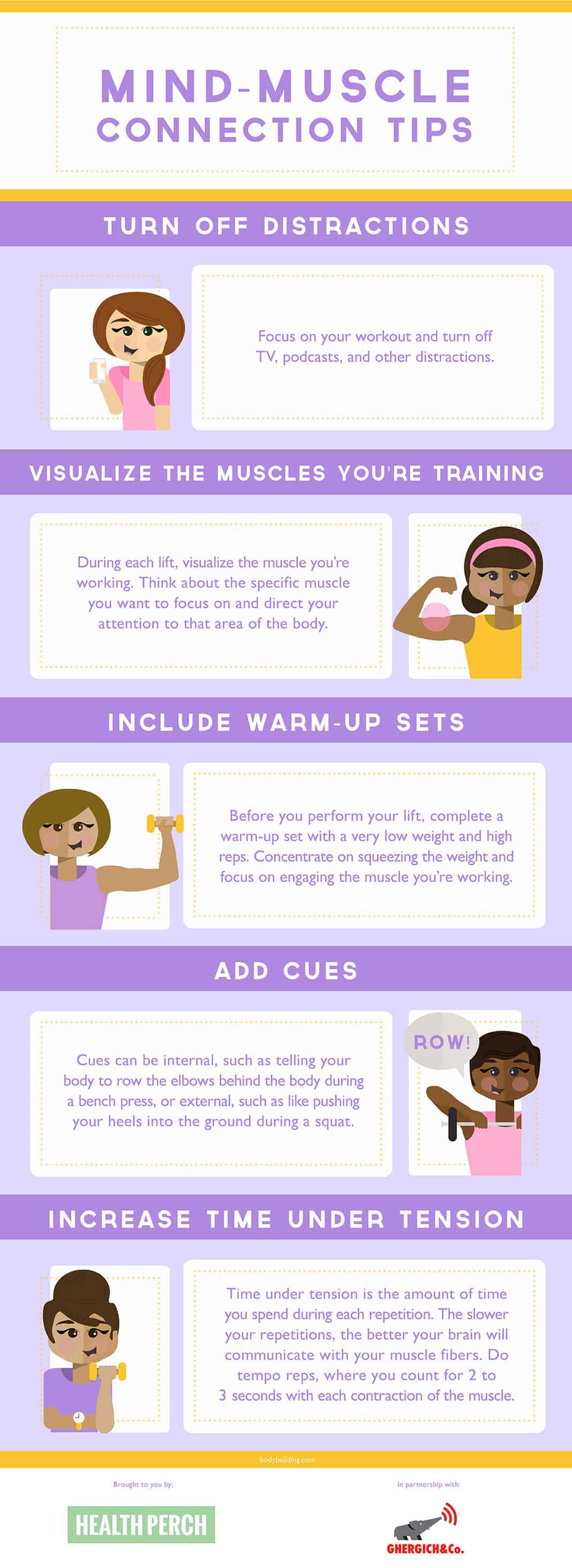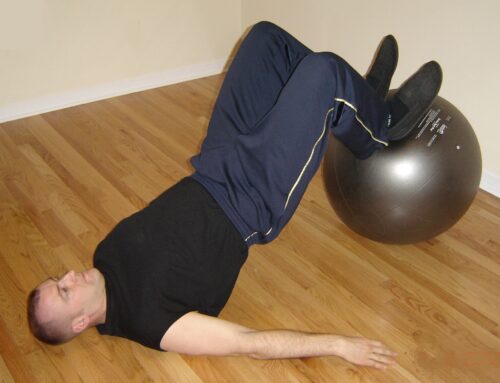There’s a lot that competes for your attention in today’s society. For example, work never seems to give us a break, thanks to technology. Many of us are glued to our mobile phones, constantly checking emails or getting texts. This is also the case when it comes to our health and fitness: there are many distractions that may take our focus away from the exercises we are performing and can interfere with the quality of our workouts.
If you’re watching television, checking your phone, daydreaming about your “to-do” list, or listening to podcasts while you train, this might reduce your concentration on the weight that you’re lifting. This graphic explains how to reduce these distractions and increase your mind-muscle connection:

What is the Mind-Muscle Connection?
Basically the mind-muscle connection is the ability to focus the tension you generate while performing a certain exercise on a specific muscle or region of muscles in the body.
When you focus on using specific muscles to create contractions, the brain calls upon a greater percentage of high muscle fibers to complete the task. By creating tension in the target muscle groups, you can increase size and strength more quickly in those specific muscles.
Internal vs External Focused Attention
Focused attention is how well the brain can concentrate on a specific activity for a given amount of time. Two types of attention are important during exercise: internal focus and external focus. Internal focus is when you concentrate on the specifics of what your body is doing. For example, during a bicep curl your mind focuses on contracting your bicep muscles while flexing the elbow.
An external focus is how your body relates to the environment during exercise. On a leg press machine, for instance, the external focus is to push the platform away from your torso with your feet. Though external and internal focus improve performance, evidence shows that internal focus plays a more integral role in muscle growth and development.
To improve your mind-muscle connection, focus your attention on the muscles required to move the weight. Intentionally contract those muscles strongly while performing any exercise.
More Time Under Tension
Time under tension during resistance training is an important component for muscle building. The more time under tension you spend during a lift, the stronger and bigger your muscles grow. Time under tension can be increased in various ways.
One way is to pause during peak contraction. For example, you can hold the mid-back squeeze at the bottom of a lat pulldown, pause at the flexed top position during a bicep curl, or hold at the bottom of a push-up.
Another way is to slow down the eccentric, or elongating “negative” portion of the exercise. Performing the eccentric movement more slowly and deliberately improves your mind-muscle connection by forcing your mind to concentrate on controlling the movement.
Additionally, isometric contractions are another great way to increase time under tension and improve how your brain relates to the muscle. Planks, side planks, hip bridges, and other static contractions are a great examples of isometric contractions.
Reduce Distractions
Turning off distractions, including your phone and television, allows your brain to focus on the task at hand. Music is a great way to energize your body and get into your workout, but you may be better off leaving the audiobooks and podcasts for the treadmill.
Putting it All Together
By focusing your mind on the muscles you are training, slowing down, increasing time under tension, and reducing distractions, you can maximize your strength and muscle-building potential.





